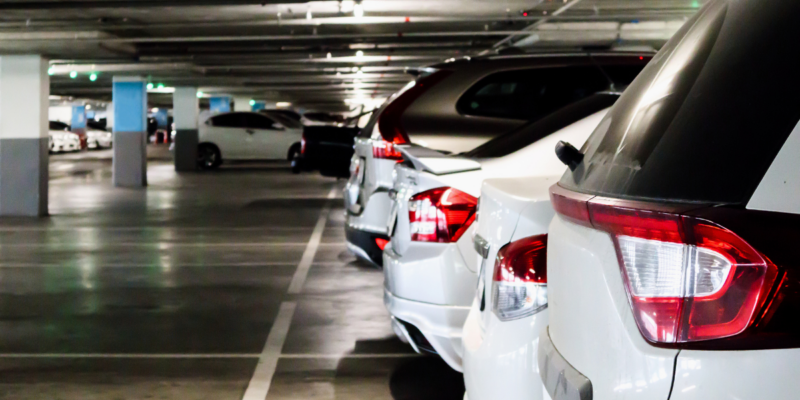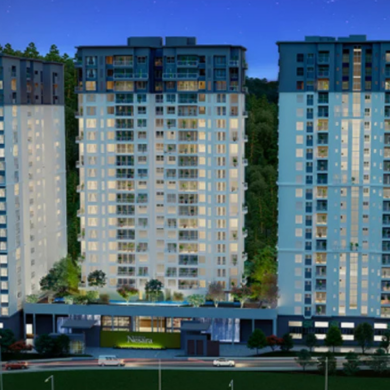
Stilt parking is a unique parking arrangement which utilises the space underneath the building for parking vehicles.
Table of Contents
What is Stilt Parking?
Stilt parking means partially covered spaces on the ground floor of a building, with 8 feet ceiling height from the ground. This is a popular solution to address the growing parking demands due to limited space in urban areas like Delhi, Mumbai, Bengaluru.
Meaning of Stilt Parking
To understand stilt parking meaning, imagine elevating the ground floor of a building to create an area where vehicles can be parked. This not only maximises the available space but also provides protection from strong sunlight, torrential rains, and to some extent gusty winds.
Rules of Stilt Parking
Many laws have been drafted to provide housing to a growing population in a city. For example, stilt parking became mandatory from 2011 in Delhi, for all newly constructed societies with areas between 100- and 1000-meter square.
It is not considered as a part of the floor-space ratio, which means if a builder has received approval for construction of four-storey building, the vertical area used in constructing the stilt parking will not be considered. This provision is beneficial for buyers – for example, if the rules allow for construction of G+1 structure, one can design the ground floor as stilt parking, and construct 2 floors above it.
Can Real Estate Builders Sell Apartment Stilt Parking Spaces?
Stilt parking is a convenient solution for optimising space in crowded urban areas where land is limited. However, the legality of selling these parking spaces has been a subject of debate and has even reached the Supreme Court of India, which ruled that these spaces cannot be sold independently.
Supreme Court Judgement on Car Parking
The Supreme Court addressed the issue of stilt parking spaces and their sale, in the Nahalchand Laloochand Pvt. Ltd. vs Panchali Co-operative Housing Society Ltd. [AIR 2010 SC 3607] case. In this significant ruling of 2010, the court rejected the argument of the real estate company that they can sell these parking spaces to owners who want to use this as private parking space.
A bench of Justices A K Patnaik and R M Lodha ruled that stilt parking spaces cannot be sold as they are part of the common area of a housing complex. The court emphasised that these parking spaces are for the convenience & use of all residents, and are essential for the proper functioning of the community. They are not individual properties that can be bought or sold independently.
Real estate developers are not allowed to sell these spaces separately. They can include the cost of providing these parking spaces under the overall pricing structure of the property they are selling. Buyers indirectly pay for this parking spaces but cannot claim ownership individually.
- The Ministry of Housing and Urban Affairs created model building bylaws and parking rules for residential areas, for example 2 equivalent car spaces per 100 sq meter of floor area in a residential complex.
- Apartment Acts in states such as Delhi and Maharashtra allow the Housing Committee to establish their own rules.
- As per the National Building Code, one parking space for a 4-wheeler must be at least 13.75 square meters and for 2-wheeler, it must be at least 1.25 square meters.
Rules for Stilt Parking Allocation
The number of parking spaces available in the gated community is limited, so residents are typically awarded space for a limited period by RWA (Residents’ Welfare Association) on a first-come, first-served basis. Periodic changes are made by RWA to accommodate new members.
Another approach is a lottery system, wherein each eligible resident or owner is assigned a unique identifier. Allocation is done through a randomised draw. This ensures that the allocation is free from any favouritism, and is fair & equal to all residents.
Priority is given to residents with specific needs, such as people with disabilities or senior citizens. It is important to note that stilt parking allocation rules may vary depending on the regulations and specific policies of housing society.
It is important for developers, housing societies, and RWAs to establish transparent procedures and communicate them effectively to maintain a harmonious living environment. By adhering to these rules, the allocation of spaces can be carried out in a systematic & equitable manner.
Are Buildings with Stilt Parking Safe?
A few buyers are concerned that these buildings are not adequately supported. In ‘The Handbook on Seismic Retrofit of Buildings’ issued by the Central Public Works Department, it is mentioned that stilt parking is considered a weakness in the building structure, and there is a risk of the ground storey caving in as it is not enclosed by walls. However, the builders argue that using the right building design to balance the weight of the structure on pillars, this risk can be mitigated and the structure can become earthquake-resistant.
Advantages of Stilt Parking
By offering several advantages, stilt parking has become a desirable solution in various residential & commercial settings. Let’s explore some of these key benefits:
-
Efficient Utilisation of Space:
This is important in crowded urban areas where land is limited. By constructing an elevated parking area, developers can use most of the available land without compromising on the number of parking spaces provided.
-
Additional Parking Capacity:
By utilising vertical space, multiple levels of parking can be created, accommodating a larger number of vehicles compared to traditional surface-level parking.Protection from weather elements: Vehicles parked under stilt parking structures are shielded from direct sunlight, rain, hail, or snow, minimising the potential damage caused by exposure to these elements.
-
Enhanced Security:
These parking structures can offer better security features compared to open parking lots. Controlled access points, surveillance cameras, and security personnel can ensure a safe environment for both vehicles and residents.
Things Buyers Should Know & Cautious About in Stilt Parking
While buying a property in a residential society with stilt parking, buyers should check with the developer for building design approval. The builders must ensure that all structures are designed properly and adhere to safety standards.
- Buyers should familiarise themselves with the legal considerations
- As a buyer, understand the ownership and allocation of stilt parking as there won’t be any individual ownership rights over this space
- Buyers should inquire about the upkeep of this parking area for repairs, cleaning, and general maintenance
- As a buyer, inquire about the security measures in place withing the stilt parking area which includes security personnel, access control system, and surveillance cameras
- Always check the insurance coverage of the parked vehicle
Stilt Parking v/s Covered Parking
Stilt Parking |
Covered Parking |
| Mostly open, but partly covered | Parking area with roof & walls, mostly covered |
| Accessible via ramps or lifts | Accessible through designated entrance and exits |
| Shared among residents | Can be individually owned or allocated |
| Convenient parking, near building entrance | Designated parking structure, like basement |
| May have limitations on vehicle size due to height restrictions | Flexible, can accommodate various sizes & types |
Final Thoughts
Stilt parking offers a unique and advantageous solution to the ever-growing parking challenges in urban areas. It optimises space utilisation, provides additional parking capacity, offers protection from adverse weather, and enhances security. These advantages make it an attractive option for both individuals and developers in urban planning & development. It allows for efficient use of vertical space and can significantly contribute to easing parking congestion in crowded areas.
Incorporating stilt parking solutions in building designs can help alleviate parking woes faced by residents & visitors. It is important to carefully consider various factors including local laws & regulations, ensuring proper construction & maintenance of the parking structure, implementing necessary safety measures, and providing clear guidelines for parking allocation & usage.
Also Read,
What are Preferential Location Charges?
What is Due Diligence in Property Buying?
Flat Maintenance Charges: A Comprehensive Overview!
FAQ’s
1. What is stilt parking?
It is a semi-open space on the ground floor of a building, specifically designed for parking vehicles
2. What is the difference between stilt parking and covered parking?
The difference between stilt parking & covered parking is that the former is a partly covered space on the ground floor, while the latter is an enclosed space which provides protection to the vehicle from adverse weather
3. Is stilt parking ownership sold in co-operative society?
Stilt parking in a co-operative society cannot be sold independently. It can be offered by the developer along with the apartment.
4. Is stilt and basement same?
No, stilt and basement parking are different as stilt is a semi-open space on the ground floor, while basement is covered and below the ground floor
5. Is stilt parking safe?
Buyers may be worried about the structural safety of such apartments. However, if a building with stilt parking is designed correctly and maintained properly, it can be structurally safe.
6. What is the maximum height of stilt parking lot?
The height of the stilt parking lot in a building is approximately 8 ft (2.4 to 2.7m)
7. What are the three types of car parking?
Parallel parking, bay parking (also known as perpendicular parking), and angled parking are the 3 types of car parking
8. What is stilt plus 4 floors?
The ground floor is designed for stilt parking, while the remaining 4 floors can be used for residential purposes.
9. What is the full meaning of stilt?
Stilt refers to the 8 feet tall, partially covered floor at the ground level to park vehicles.
10. What is the Supreme Court decision on stilt parking?
The Supreme Court of India ruled in 2010 that developers cannot sell stilt parking spaces as individual units. Being common areas in the society, these spaces can be combined with the apartments / homes and only then sold to individuals.
11. What does stilt mean for flats?
Stilt is a construction technique where the building is raised above the ground level on pillars or columns to make an elevated platform.
12. What is the purpose of stilt floor?
The purpose of the stilt floor in a building is to provide a designated area for parking vehicles, ensuring convenience for residents, and optimising land utilisation
13. What is stilt in building?
Stilts are pillars or a supporting structure that allows a building to stand at a distance above the ground







